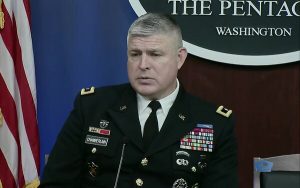
The Army’s top budget official said Thursday the service expects to start fiscal year 2022 under a continuing resolution (CR) with Congress facing a compressed timeline to complete appropriations bills. “One of the challenges we see with fiscal year ‘22, which has really happened nine of the last 10 years, is we do expect to start [FY ‘22] under a continuing resolution authority,” Maj. Gen. Paul Chamberlain, the Army’s budget director, said during an Association of the United States Army…

 By
By 











